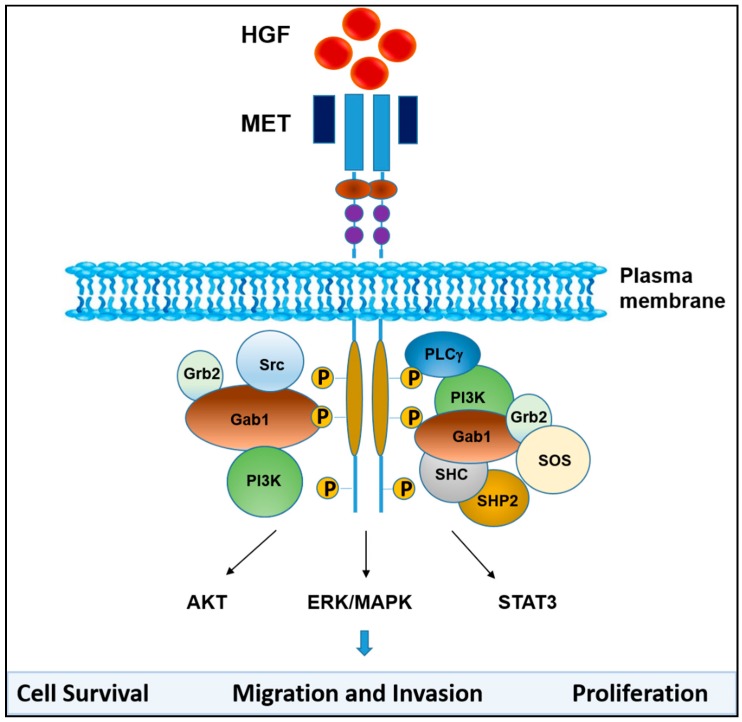Figure 3.
HGF/MET signaling. Binding of HGF to MET induces conformational changes that result in receptor dimerization and trans-phosphorylation of tyrosine residues in the catalytic domain of MET and phosphorylation of tyrosine residues in the carboxyl-terminal tail. The phosphorylated tyrosine residues create docking sites for several adaptor molecules and kinase substrates as indicated. MET activation leads to subsequent activation of signaling pathways that include MAPK, PI3K/AKT and STAT3, which mediate MET-dependent cell proliferation, survival, migration and invasion.

